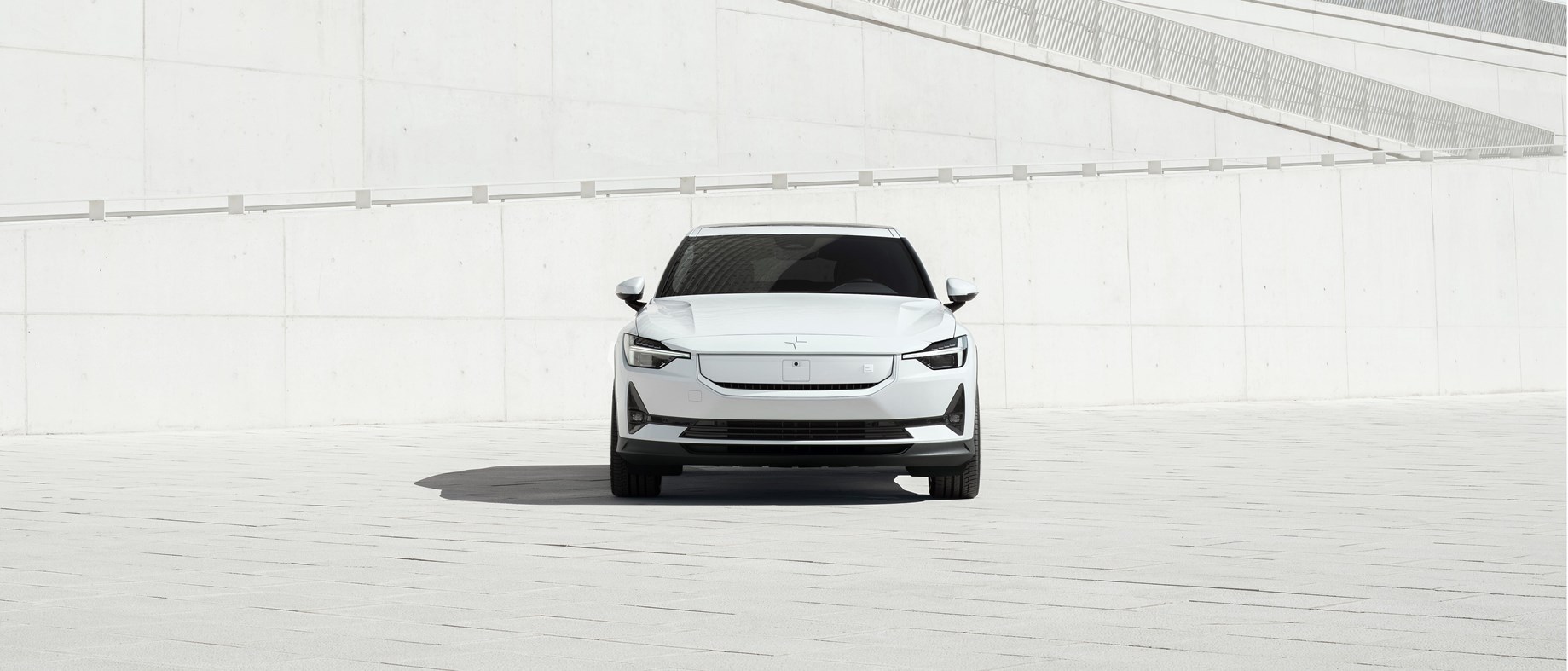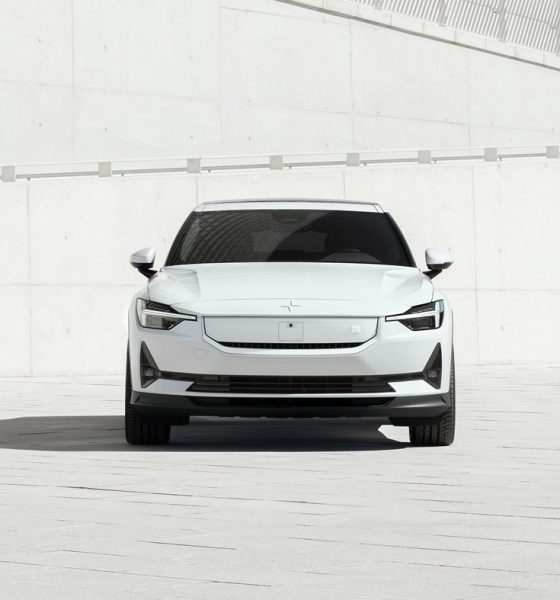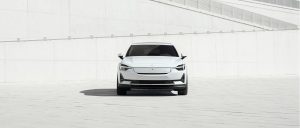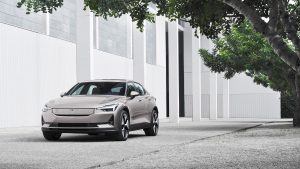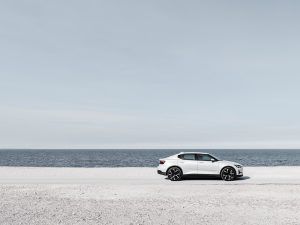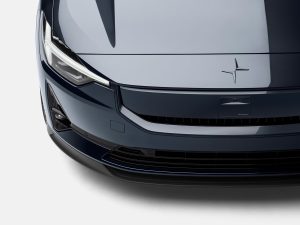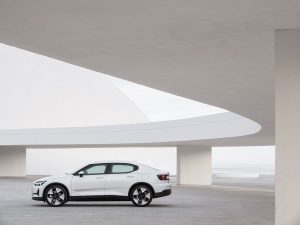Polestar has revealed its next-generation Polestar 2 sedan, which comes with a series of significant upgrades and some minor design changes.
Polestar is an innovative Swedish EV brand that has quickly gained a cult following in North America and Europe for its sleek and modern design, relentless dedication to sustainable manufacturing, and premium interior offerings which have clearly benefitted from the company’s relation to Volvo. Now, the company has released the next generation of its trendy Polestar 2 sedan, and with some significant performance upgrades, the vehicle has only become a more enticing offering.
Foremost in the company’s press release is the sad passing of the front-wheel-drive model; it will be missed. But in its place, Polestar has followed in the footsteps of Tesla and made rear-wheel-drive the standard drive for its vehicles. Along with the change in orientation, Polestar has designed an all-new drivetrain that means the RWD model could be pretty squirrely.
With Polestar’s new permanent magnet motor design, the single motor, RWD, standard range sedan comes with 300 horsepower (220kW), 361 pound-feet of torque, and a (while not blistering) respectable 0-60 of 6.2 seconds. Compared to the current generation sedan, this is an increase of over 60 horsepower and roughly 120 pound-feet of torque.
Luckily, this massive boost in power doesn’t come at the detriment of range. With the standard 69kWh battery, the RWD Polestar 2 achieves a range of 322 miles (518km), and with the optional 82kWh long-range battery, the sedan is capable of a staggering 395 miles (635km) of range. However, it should be noted that with the smaller standard-range battery, drivers are limited to a charging speed of 135kW instead of the 205kW the long-range battery is capable of.
Now, don’t hold your breath if you are like me and think this new upgrade has you ready to buy. Polestar will not sell the standard range sedan in North America, meaning that the base model vehicle’s price will likely rapidly increase in the next generation.
For those who are more interested in the higher performance trims, Polestar has not left you hanging. The dual-motor AWD variant of the Polestar 2, which is only available with the longer-range battery, receives an equally massive bump in power. A rear-biased system produces 422 horsepower (310kW) and 545 pound-feet of torque, rocketing the sport sedan to 60 in just 4.5 seconds. And if that isn’t enough, Polestar also sells an optional Performance Pack, which increases power to 476 horsepower and lowers the 0-60 to just 4.2 seconds.
Other upgrades to the next-gen vehicle focus on its driving tech and sustainability. Foremost, Polestar will include the “Smart Zone” on the vehicle, a panel of radar sensors, and cameras on the front of the car to aid in autonomous driving applications. While this sensor array was first displayed on the upcoming Polestar 3 SUV, it’s clear that the company will introduce it to more products as it continues to improve its autonomous driving offering.
The upgrade in sustainability is also quite significant, as Polestar has cut the carbon emissions per car produced by over a ton, equating to a far better lifecycle carbon footprint than the current generation.
Pricing has not yet been made available by Polestar for markets outside of Europe. Still, the Standard Range RWD model will be available for 50,190 euros (not available in North America), with the top-of-the-line Long Range AWD Performance model going for 64,690 euros ($70,315). The base model that will be available in North America, the Long-Range RWD, coming in March of this year, sells for 53,890 euros ($58,569).
Following Tesla’s recent price cuts, the Polestar 2, despite its unique upgrades, comes off as quite the premium offering and may face some significant backlash for not following Tesla’s steps and lowering prices. And while the company may receive some help if it can assemble the vehicle at Volvo’s South Carolina facility, allowing it to qualify for the US Federal EV incentive, it would still be priced a full $10,000 more than the base Tesla Model 3. It remains unclear if the focus on sustainability and the more premium interior will attract customers from the EV juggernaut in North America or globally.
What do you think of the article? Do you have any comments, questions, or concerns? Shoot me an email at william@teslarati.com. You can also reach me on Twitter @WilliamWritin. If you have news tips, email us at tips@teslarati.com!

News
Waymo sues Santa Monica over order to halt overnight charging sessions
In its complaint, Waymo argued that its self-driving cars’ operations do not constitute a public nuisance, and compliance with the city’s order would cause the company irreparable harm.
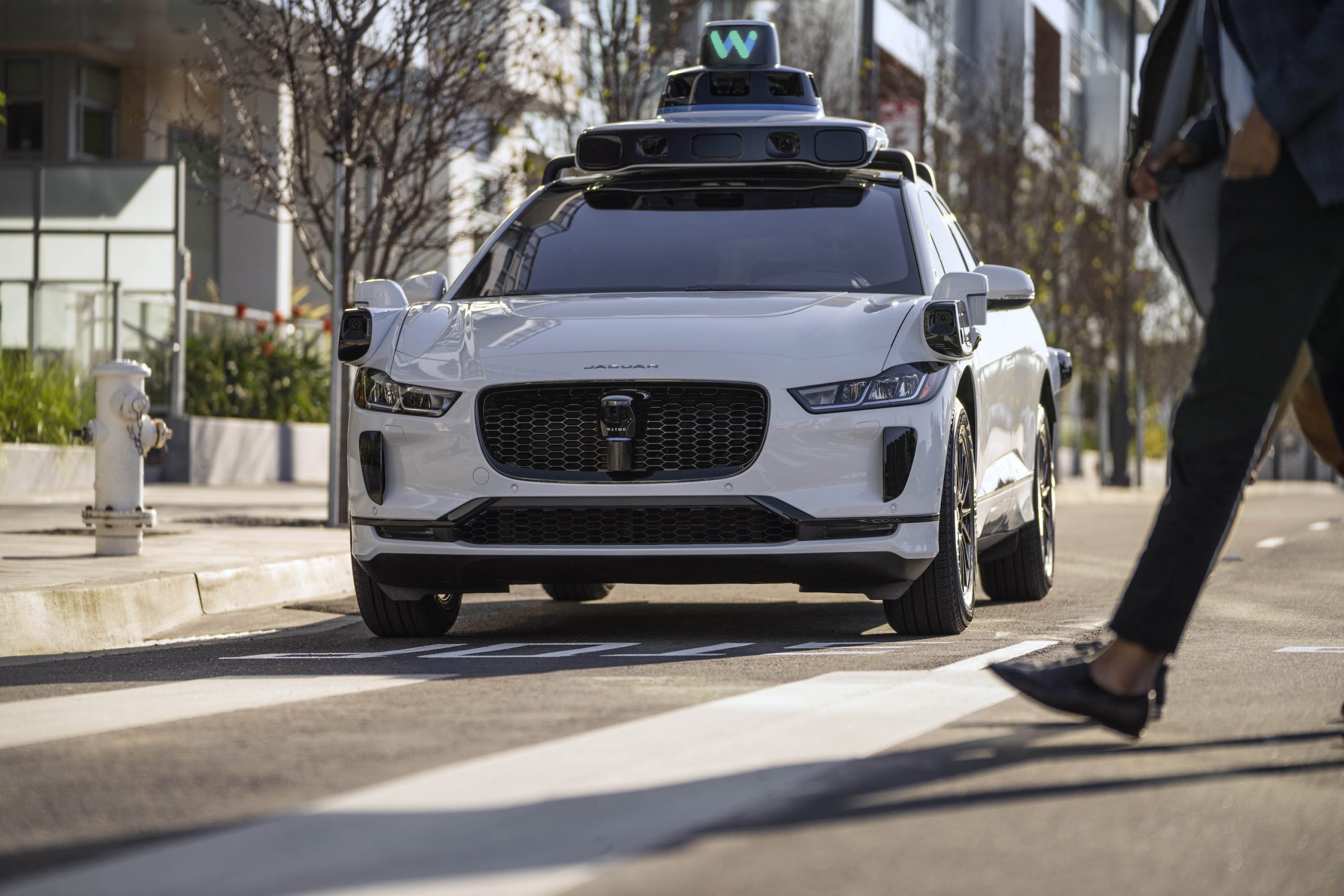
Waymo has filed a lawsuit against the City of Santa Monica in Los Angeles County Superior Court, seeking to block an order that requires the company to cease overnight charging at two facilities.
In its complaint, Waymo argued that its self-driving cars’ operations do not constitute a public nuisance, and compliance with the city’s order would cause the company irreparable harm.
Nuisance claims
As noted in a report from the Los Angeles Times, Waymo’s two charging sites at Euclid Street and Broadway have operated for about a year, supporting the company’s growing fleet with round-the-clock activity. Unfortunately, this has also resulted in residents in the area reportedly being unable to sleep due to incessant beeping from self-driving taxis that are moving in and out of the charging stations around the clock.
Frustrated residents have protested against the Waymos by blocking the vehicles’ paths, placing cones, and “stacking” cars to create backups. This has also resulted in multiple calls to the police.
Last month, the city issued an order to Waymo and its charging partner, Voltera, to cease overnight operations at the charging locations, stating that the self-driving vehicles’ activities at night were a public nuisance. A December 15 meeting yielded no agreement on mitigations like software rerouting. Waymo proposed changes, but the city reportedly insisted that nothing would satisfy the irate residents.
“We are disappointed that the City has chosen an adversarial path over a collaborative one. The City’s position has been to insist that no actions taken or proposed by Waymo would satisfy the complaining neighbors and therefore must be deemed insufficient,” a Waymo spokesperson stated.
Waymo pushes back
In its legal complaint, Waymo stated that its “activities at the Broadway Facilities do not constitute a public nuisance.” The company also noted that it “faces imminent and irreparable harm to its operations, employees, and customers” from the city’s order. The suit also stated that the city was fully aware that the Voltera charging sites would be operating around the clock to support Waymo’s self-driving taxis.
The company highlighted over one million trips in Santa Monica since launch, with more than 50,000 rides starting or ending there in November alone. Waymo also criticized the city for adopting a contentious strategy against businesses.
“The City of Santa Monica’s recent actions are inconsistent with its stated goal of attracting investment. At a time when the City faces a serious fiscal crisis, officials are choosing to obstruct properly permitted investment rather than fostering a ‘ready for business’ environment,” Waymo stated.
News
Tesla FSD v14.2.2 is getting rave reviews from drivers
So far, early testers have reported buttery-smooth drives with confident performance, even at night or on twisty roads.

Tesla Full Self-Driving (Supervised) v14.2.2 is receiving positive reviews from owners, with several drivers praising the build’s lack of hesitation during lane changes and its smoother decision-making, among others.
The update, which started rolling out on Monday, also adds features like dynamic arrival pin adjustment. So far, early testers have reported buttery-smooth drives with confident performance, even at night or on twisty roads.
Owners highlight major improvements
Longtime Tesla owner and FSD user @BLKMDL3 shared a detailed 10-hour impression of FSD v14.2.2, noting that the system exhibited “zero lane change hesitation” and “extremely refined” lane choices. He praised Mad Max mode’s performance, stellar parking in locations including ticket dispensers, and impressive canyon runs even in dark conditions.
Fellow FSD user Dan Burkland reported an hour of FSD v14.2.2’s nighttime driving with “zero hesitations” and “buttery smooth” confidence reminiscent of Robotaxi rides in areas such as Austin, Texas. Veteran FSD user Whole Mars Catalog also demonstrated voice navigation via Grok, while Tesla owner Devin Olsen completed a nearly two-hour drive with FSD v14.2.2 in heavy traffic and rain with strong performance.
Closer to unsupervised
FSD has been receiving rave reviews, even from Tesla’s competitors. Xpeng CEO He Xiaopeng, for one, offered fresh praise for FSD v14.2 after visiting Silicon Valley. Following extended test drives of Tesla vehicles running the latest FSD software, He stated that the system has made major strides, reinforcing his view that Tesla’s approach to autonomy is indeed the proper path towards autonomy.
According to He, Tesla’s FSD has evolved from a smooth Level 2 advanced driver assistance system into what he described as a “near-Level 4” experience in terms of capabilities. While acknowledging that areas of improvement are still present, the Xpeng CEO stated that FSD’s current iteration significantly surpasses last year’s capabilities. He also reiterated his belief that Tesla’s strategy of using the same autonomous software and hardware architecture across private vehicles and robotaxis is the right long-term approach, as it would allow users to bypass intermediate autonomy stages and move closer to Level 4 functionality.
News
Elon Musk’s Grok AI to be used in U.S. War Department’s bespoke AI platform
The partnership aims to provide advanced capabilities to 3 million military and civilian personnel.
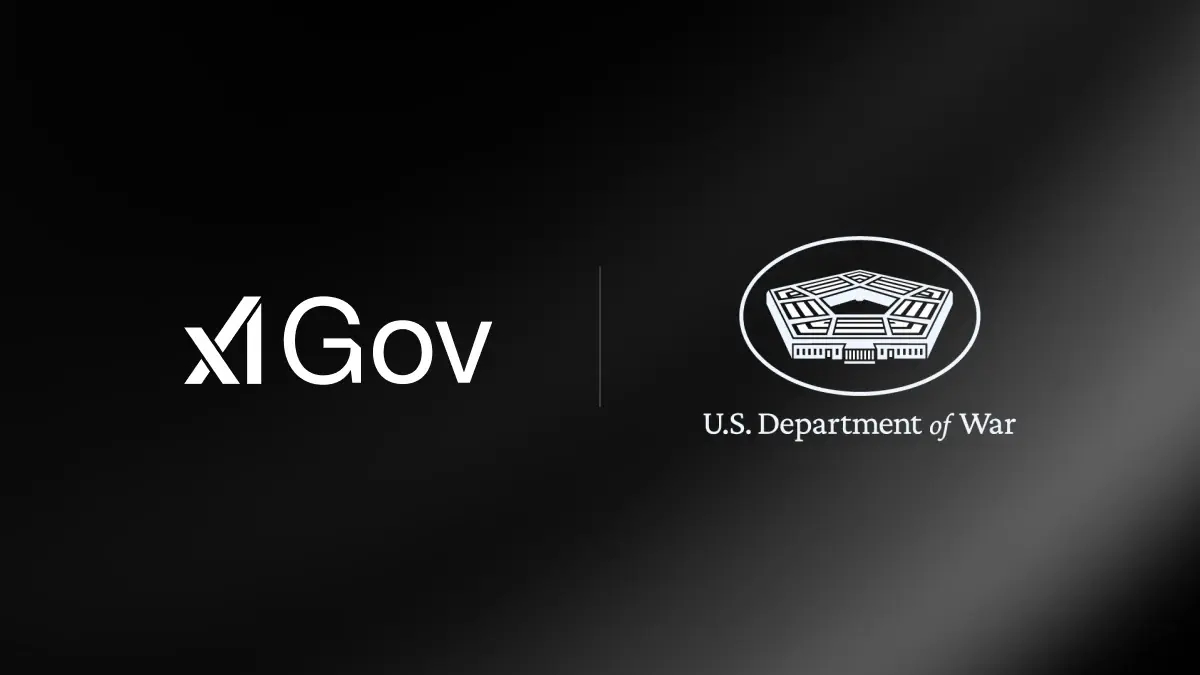
The U.S. Department of War announced Monday an agreement with Elon Musk’s xAI to embed the company’s frontier artificial intelligence systems, powered by the Grok family of models, into the department’s bespoke AI platform GenAI.mil.
The partnership aims to provide advanced capabilities to 3 million military and civilian personnel, with initial deployment targeted for early 2026 at Impact Level 5 (IL5) for secure handling of Controlled Unclassified Information.
xAI Integration
As noted by the War Department’s press release, GenAI.mil, its bespoke AI platform, will gain xAI for the Government’s suite of tools, which enable real-time global insights from the X platform for “decisive information advantage.” The rollout builds on xAI’s July launch of products for U.S. government customers, including federal, state, local, and national security use cases.
“Targeted for initial deployment in early 2026, this integration will allow all military and civilian personnel to use xAI’s capabilities at Impact Level 5 (IL5), enabling the secure handling of Controlled Unclassified Information (CUI) in daily workflows. Users will also gain access to real‑time global insights from the X platform, providing War Department personnel with a decisive information advantage,” the Department of War wrote in a press release.
Strategic advantages
The deal marks another step in the Department of War’s efforts to use cutting-edge AI in its operations. xAI, for its part, highlighted that its tools can support administrative tasks at the federal, state and local levels, as well as “critical mission use cases” at the front line of military operations.
“The War Department will continue scaling an AI ecosystem built for speed, security, and decision superiority. Newly IL5-certified capabilities will empower every aspect of the Department’s workforce, turning AI into a daily operational asset. This announcement marks another milestone in America’s AI revolution, and the War Department is driving that momentum forward,” the War Department noted.
